 What's This Caterpillar?
What's This Caterpillar?
News > What's This Caterpillar? >
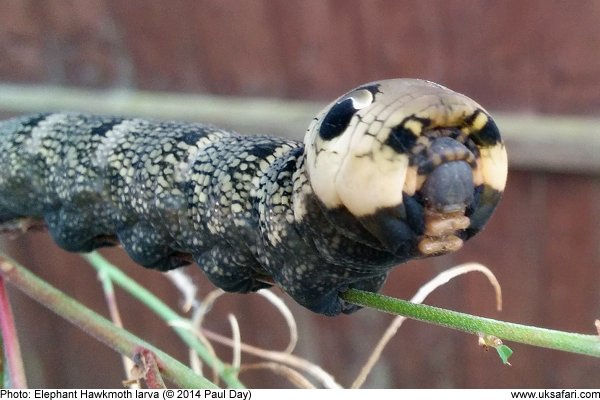
Once again it's been another good year for Elephant Hawk-moths. How do we know this? Because we've been inundated with emails loaded full of photos of Elephant Hawk-moth caterpillars.
We've received enough photos of them this year to wallpaper the Albert Hall - inside and out. It's got to the point where if we see an email with the subject "Can u identify this katepiller?" (sic) we didn't even need to open it to reply.
Identification Problems
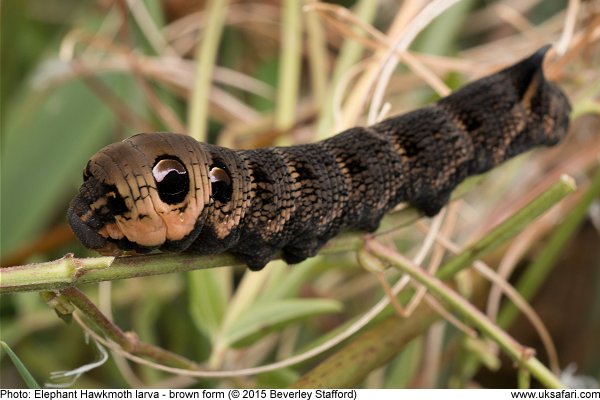
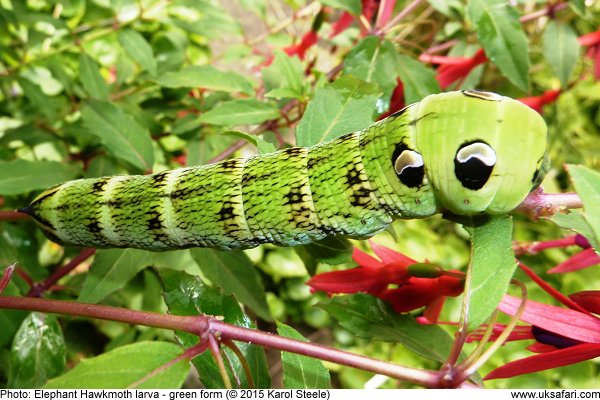
Descriptions of these caterpillars varied considerably, which isn't too surprising as there are two different forms. One is bright green, and the other (most frequently seen) is olive-brown. Both types feature the characteristic 'eye' markings, and of course the trunk-like snout at the head end which give the creatures their name.
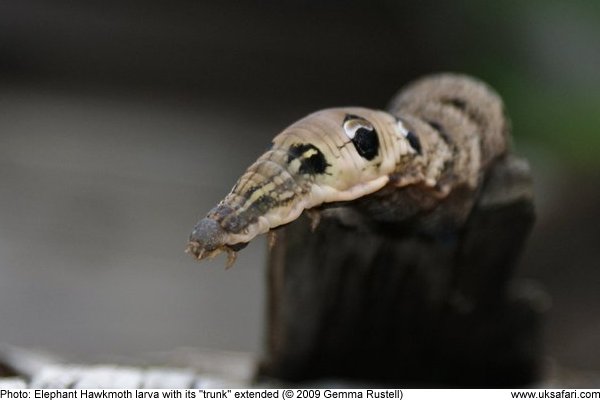
This species is common in gardens where they gorge themselves on fuchsia stems and leaves. Towards the end of August they're about fully grown, and so they're much more obvious. When they're ready to pupate they move down to the ground and shelter under dry leaves and bark.
Fuchsia Snakes?
One person who found some on her fuchsias thought they were "slow-moving snakes!" The word 'optician' initially sprang to mind, but the scaly pattern along the skin can look a bit reptillian... from a distance... in poor light.
Of course the best thing about these caterpillars is they turn into one of the most brightly coloured moths in the UK. Their bright pink markings often mislead people into thinking they've seen an exotic butterfly.
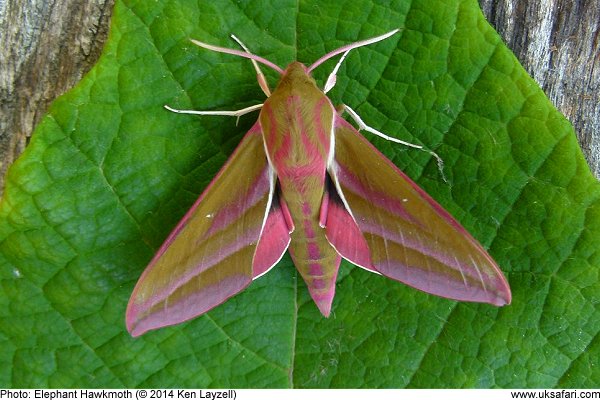
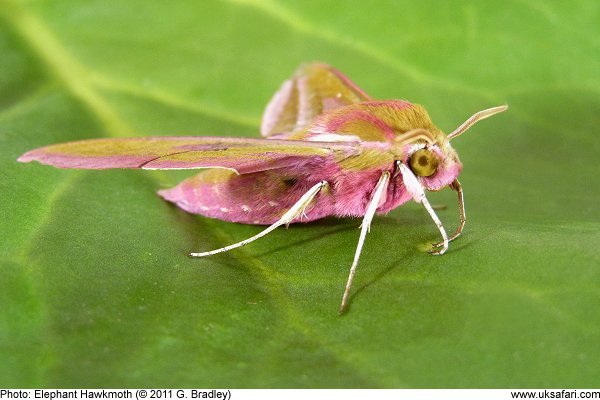
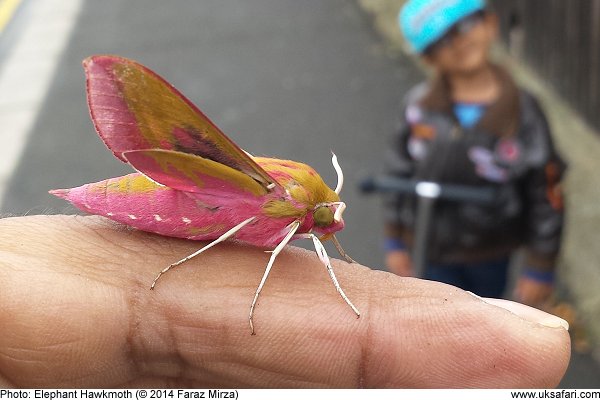
More info at: Elephant Hawk-moth Fact File

 Popular Pages
Popular Pages
Amphibians, Bats, Badgers, Beetles, Birds, Birds of Prey, Bumble Bees, Butterflies, Caterpillars, Creepy-Crawlies, Deadly Spiders, Dolphins, Dragonflies, E-Postcards, False Widow Spiders, Free Newsletter, Frogs, Fungi, Garden Spiders, Glow-Worms, Grey Squirrels, Hedgehogs, House Spiders, Ladybirds, Mammals, Marine Mammals, Moths, Owls, Reptiles, Spiders, Toads, Trees, Wildlife Hospitals
© Copyright 2017 G. Bradley - UK Safari | About Us | Links | Contributors



 Related Pages
Related Pages
